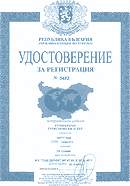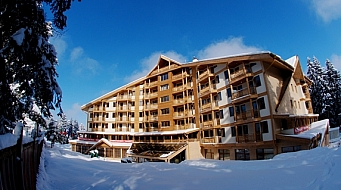Top offers
Heritage and Culture







Cultural tourism Bulgaria is a small country, located at the crossroads between East and West, on the territory of which different civilizations, peoples and traditions have left a historical trace throughout millennia. There is no town or village in the country without architectural sights or various cultural monuments of Thracians, Goths, Greeks, Romans, Huns, Slavs, Bulgars, Pechenegs. One of the most valuable cultural and archaeological treasures, the discovery of which continues to this day, is the Thracian heritage. Thracians inhabited the territory of Bulgaria between 6th century BC and 1st century AD. According to Herodotus they were the largest nation after the Indians. They had common traditions and were distinguished as brave warriors. Thracians developed and cherished various kinds of arts. Many rich burials with precious and incredibly fine crafted golden and silver pieces were found throughout the country. Of particular value are: The Panagyurishte golden treasure and the Rogozen golden treasure. In the middle of the 1st century BC until the 7th century BC Bulgarian lands became part of the Roman Empire and on the territory of today‘s Plovdiv and Sofia emerged large administrative centers of the Roman provinces. The monuments, particularly noteworthy and preserved till today, are the Ancient Theater and the Roman Stadium in Plovdiv. During the time of Emperor Constantine Sofia flourished and even became one of his favorite summer residences. According to many sources he used to refer to the city as "Serdica - my Rome." After the collapse of the Roman Empire, the Bulgarian lands were populated by Slavs and Bulgars. In 681 they united, constituting the state called Bulgaria. Going through various struggles for power and territory, as well as for the adoption of one single language and religion, eventually Bulgaria became one of the most powerful states in the Middle Ages. The centers of this culture, in a chronological sequence, were: Pliska, Preslav, Veliko Tarnovo and the country‘s capital - Sofia. During the First Bulgarian Empire Pliska and Veliki Preslav were capitals. During that period a large-scale state construction began and Christianity was accepted. In these historic sites can be found extremely interesting buildings from the early Christian culture in Bulgaria and Europe. During the Second Bulgarian Empire Bulgaria‘s capital moved to Veliki Preslav. This was the period of the so called “Golden Age” for the Bulgarian culture, during which Bulgaria turned into the most powerful cultural and historical center throughout whole Southeast Europe. The Slavic alphabet was created, with which Bulgaria stopped the penetration of foreign cultural, linguistic and political influence. The country became the cradle of Slavic culture. Cyrillic is the official script in Russia, Ukraine, Belarus, Serbia and Macedonia until today. After long and continuous wars in 1018 Bulgaria fell under the rule of Byzantium. Almost a century later, the boyar brothers Asen and Petar founded the Second Bulgarian Empire and moved the capital to Veliko Tarnovo. There is a great number of preserved forts, palaces and churches, dating back from 12th to 14th century. From this period of particular interest are: the frescoes in Boyana Church, which is located near Sofia. In the 15th century Bulgaria fell under Ottoman rule. The country, along with the other Balkan countries, served as the last barrier to the Ottoman invasion, saving Europe from falling under Ottoman rule. After the liberation by the Russian Liberation Army in 1878, Bulgaria returned in the bosom Europe.
Articles
The rose festival in Kazanlak starts on 13th of May The Architectural-Ethnographic Complex Ether turns 50 First Sofia Medieval fair Eagle On The Danube - Eighth Edition The Town of Kazanlak and Valley of the Roses - Festival of the Roses 2014 Bulgarias Treasures Calendar of cultural events Troyan 2014 Tsarevgrad Tarnov multimedia visitor center was awarded at the tourism fair Holiday аnd Spa Expo, Sofia Unique Balneotherapy center - a replica of Roman Baths The ancient villa Armira regains its splendor International Festival of Babuger Masks and Games Another unique find added to the Thracian cultural heritage Thracian Gold from Bulgaria. Legends Come AliveHeritage and Culture hotels reviews
Catalog of object in the resort
Museums
- National History Museum - Sofia Archeological Museum Varna - Varna Varna History Museum - Varna
- Proto-Bulgarian village "Fanagoria" - Varna Ethnograthic museum - Plovdiv Historical museum - Plovdiv Archaeological Museum - Plovdiv Archaeological Museum - Sofia Ethnographic complex Zlatograd - Zlatograd
Places of interest
- Aladja Monastery - Golden sands Perperikon - Kardzhali Tsari Mali Grad - Borovets Ivanovo rock churches - Ruse Tomb of Sveshtari - Razgrad "Tsarevgrad Tarnov" Multimedia Visitor Center - Veliko Tarnovo Boyana church - Sofia National historical reserve Madara - Shumen Architectural-Historical Reserve Nessebar Old Town - Nesebar Rila monastery - Sofia Architectural-Historical Reserve Old Town Plovdiv - Plovdiv Villa Armira - Ivailovgrad Ethnographic complex "Chateau Medovo" - Sunny beach Winery Villa Melnik - Melnik
Bulgaria Destinations
Tourism news
© 2001 — 2024 | All rights reserved | created by format.bg




